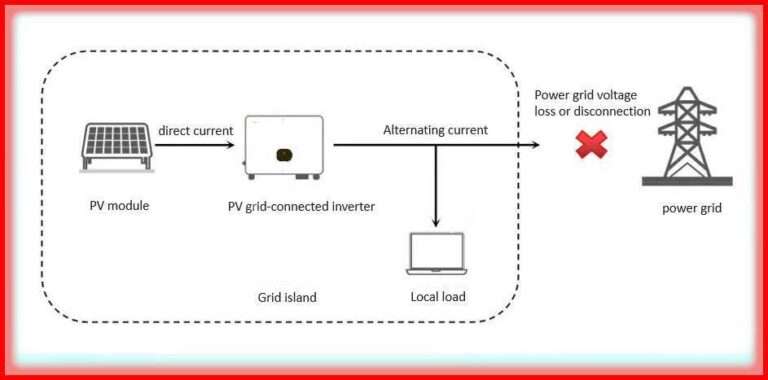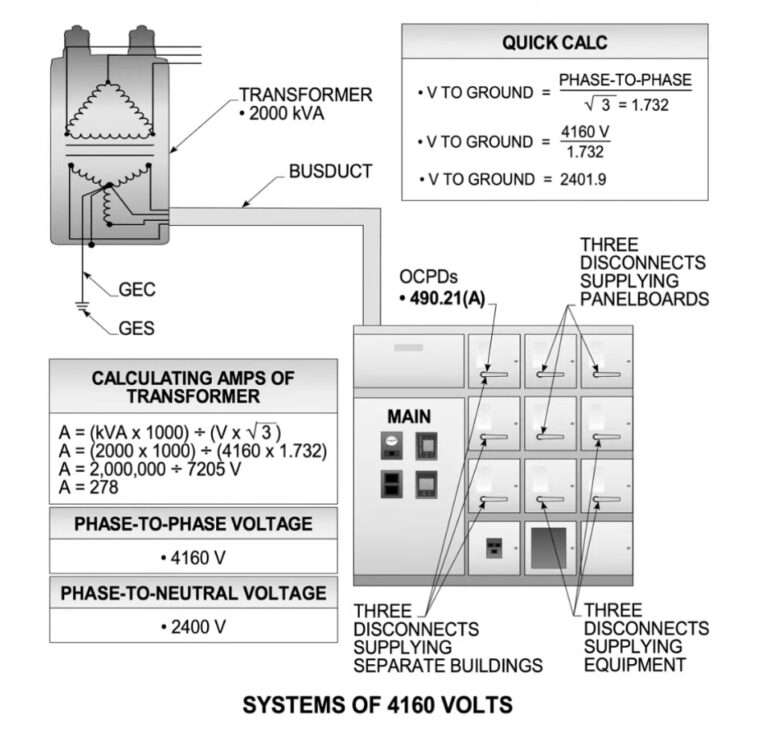Creepage Distance Calculator – Calculate Safe Insulation & Clearance for PCB and High Voltage Design
Electrical insulation safety depends on several critical parameters — one of the most important being the creepage distance. Engineers, designers, and electricians must ensure that components can withstand voltage stress and environmental factors like humidity or contamination. That’s where a Creepage Distance Calculator becomes an essential design tool. It helps determine the minimum surface distance required between two conductive parts to prevent arcing or tracking across insulating surfaces.

Table of Contents
The Creepage Distance Calculator simplifies this process by providing accurate distance values based on working voltage, pollution degree, material group, and environment. Whether you’re designing a PCB, transformer, insulator, or switchgear, this calculator ensures compliance with IEC and UL insulation standards.
What is Creepage Distance
Creepage distance is the shortest path along the surface of an insulating material between two conductive parts. Unlike clearance distance, which measures the shortest air gap between conductors, creepage distance measures the surface path.
This distinction is vital because surface contamination and moisture can create conductive films, leading to tracking, partial discharge, and insulation failure.
In simple terms, creepage distance is what keeps high-voltage systems safe. When it’s too short, there’s a higher risk of flashover. When properly calculated, it guarantees system reliability and long-term insulation life.
Creepage Distance Calculator
Calculate the minimum creepage distance required between conductive parts based on voltage, insulation, and environmental conditions.
Importance of Using a Creepage Distance Calculator
Manually determining creepage distance requires multiple steps and referencing complex standards like IEC 60664-1 or UL 840. Each standard has tables and conditions based on pollution degree, working voltage, and material group. A Creepage Distance Calculator automates all of this. You just input the parameters, and it instantly outputs the required minimum creepage.
Here’s why engineers use it:
- Ensures compliance with international safety standards
- Prevents electrical tracking and insulation breakdown
- Saves design time during PCB or equipment development
- Helps optimize material use and spacing in compact designs
It’s especially useful for high-voltage and medium-voltage systems where even a small design mistake can cause equipment failure or safety hazards.
Know more about IEC Standard for Creepage Distance – Electrical Insulation Requirements and Design Guide
How Creepage Distance Calculator Works
A Creepage Distance Calculator uses standard formulas and tables defined in IEC 60664-1. The key input parameters include:
- Rated working voltage (Vrms or VDC)
- Pollution degree (from 1 to 4)
- Material group (I, II, IIIa, IIIb)
- Comparative Tracking Index (CTI) of the material
Once these are entered, the calculator determines the required creepage distance in millimeters.
Let’s look at an example table to understand how it works.
Example: IEC 60664-1 Reference Table for Creepage Distance
| Pollution Degree | Material Group I (CTI ≥ 600) | Material Group II (400 ≤ CTI < 600) | Material Group IIIa (175 ≤ CTI < 400) | Material Group IIIb (100 ≤ CTI < 175) |
|---|---|---|---|---|
| 1 | 0.6 mm per kV | 0.8 mm per kV | 1.0 mm per kV | 1.2 mm per kV |
| 2 | 1.0 mm per kV | 1.2 mm per kV | 1.5 mm per kV | 1.8 mm per kV |
| 3 | 1.5 mm per kV | 2.0 mm per kV | 2.5 mm per kV | 3.2 mm per kV |
| 4 | 2.5 mm per kV | 3.2 mm per kV | 4.0 mm per kV | 5.0 mm per kV |
This table shows how creepage distance increases with pollution degree and decreases with higher-quality materials.
For instance, if your circuit operates at 250V AC in pollution degree 2 and uses a material with CTI 400, the required creepage distance would be:
1.2 mm/kV × 0.25 kV = 0.3 mm (rounded per standard limits).
However, real-world applications often have specific requirements based on the design category and insulation type (basic, reinforced, or functional). That’s why using a Creepage Distance Calculator is far more accurate and convenient.
Factors Affecting Creepage Distance
Several environmental and material factors influence the creepage distance value. The Creepage Distance Calculator considers these automatically:
Pollution Degree – Defines contamination level of the environment.
Degree 1: Clean, controlled environments like sealed components.
Degree 2: Typical office or indoor environments.
Use our online tool DC Circuit Breaker Sizing Calculator – Accurate Tool for DC Load Protection
Degree 3: Industrial environments with conductive dust or humidity.
Degree 4: Outdoor or severe industrial exposure.
Material Group – Depends on the CTI (Comparative Tracking Index) of the insulation material. Higher CTI values mean better resistance to tracking and therefore smaller required creepage distances.
Voltage Stress – Higher voltages require longer creepage paths.
Design Geometry – Sharp corners or surface irregularities can increase field stress and tracking risk.
Altitude – At higher altitudes, air breakdown voltage decreases, requiring adjusted creepage and clearance.
Coating and Encapsulation – Protective coatings reduce pollution effects and allow for smaller creepage distances.
By considering all these parameters, a Creepage Distance Calculator ensures designs meet both performance and safety standards.
Creepage vs Clearance
To avoid confusion, it’s important to differentiate between creepage distance and clearance distance.
| Parameter | Creepage Distance | Clearance Distance |
|---|---|---|
| Path Type | Along surface of insulation | Through air between conductors |
| Affected by | Surface contamination and tracking | Air pressure, humidity, and voltage |
| Measured Between | Conductive parts along insulation | Conductive parts through air |
| Relevant Standard | IEC 60664-1 | IEC 60664-1 |
| Design Impact | Defines insulation surface quality | Defines air gap safety |
Both are essential in insulation design, and calculators often compute both values for a complete analysis.
Benefits of Using a Creepage Distance Calculator
Using a Creepage Distance Calculator offers multiple design and operational advantages:
- Faster Design Validation: Engineers can instantly check if their PCB or component meets creepage requirements.
- Compliance Assurance: Ensures compliance with IEC, UL, and EN safety standards.
- Reduced Failure Risk: Prevents premature insulation failure due to tracking or arcing.
- Optimized Design Space: Avoids overdesigning insulation, saving board space and material cost.
- Better Reliability: Increases equipment lifespan under high-voltage and polluted conditions.
For manufacturers, this calculator also helps during product certification, reducing costly redesigns or test failures.
Use our online tool Electricity Load Calculator (kVA) According to IEC and NEC
Typical Applications of Creepage Distance Calculation
The Creepage Distance Calculator is widely used across multiple industries and applications, including:
- Printed Circuit Boards (PCBs) – Determining track spacing between high-voltage traces.
- Transformers and Motors – Calculating insulation between windings and terminals.
- Switchgear and Relays – Ensuring proper spacing in contact assemblies.
- Solar Inverters and Power Supplies – Maintaining insulation in high-voltage DC circuits.
- Medical and Industrial Equipment – Meeting strict insulation safety standards.
In all these cases, calculating accurate creepage distance helps prevent insulation breakdown and ensures product reliability.
Creepage Distance Standards
Several international standards define creepage and clearance requirements. The most commonly used include:
- IEC 60664-1: Insulation coordination for equipment within low-voltage systems.
- UL 840: Insulation coordination for electrical equipment.
- IEC 60950 and IEC 62368: Standards for information technology and audio/video equipment.
- IEC 62109: Used for photovoltaic power systems and inverters.
The Creepage Distance Calculator is built according to these standards, ensuring the calculated values meet international design norms.
Example Calculation Using Creepage Distance Calculator
Let’s consider an example to demonstrate how easy it is to use the calculator.
Input Parameters:
- Rated Voltage: 400V
- Pollution Degree: 3
- Material Group: II (CTI 500)
- Environment: Industrial
Based on IEC 60664-1, the calculator will apply the correct multiplier for pollution degree 3 and material group II:
Creepage = 2.0 mm per kV × 0.4 kV = 0.8 mm
So, the required creepage distance is 0.8 mm, but most standards round this up to a minimum safe value depending on product type.
If you had to calculate this manually, it would involve checking multiple tables, applying correction factors, and verifying insulation types. The calculator simplifies this to one click.
Use our online tool MM to AWG Wire Size Calculator According to IEC and NEC
Tips for Accurate Creepage Design
To ensure reliable results, always use the Creepage Distance Calculator with accurate input data and design awareness.
- Choose materials with high CTI values to reduce required distance.
- Avoid sharp edges and dust-collecting surfaces on insulation.
- Use conformal coatings in polluted or humid environments.
- Verify altitude correction if the product is used above 2000 meters.
- Recheck values when changing PCB material or manufacturing process.
These practices improve insulation performance and ensure safety compliance.
Why Every Engineer Should Use the Creepage Distance Calculator
In modern electrical design, safety cannot be compromised. With compact layouts and higher voltages in power electronics, maintaining correct creepage distances is more important than ever. The Creepage Distance Calculator helps achieve this efficiently and accurately.
It reduces design time, eliminates guesswork, and ensures compliance with global insulation standards. By integrating this calculator into your design workflow, you can enhance safety, improve reliability, and confidently meet certification requirements.
Engineers across industries — from electronics to renewable energy — rely on it for quick and reliable creepage distance estimation.
Conclusion
The Creepage Distance Calculator is more than a convenience tool — it’s a safety assurance system for electrical and electronic designs. It converts complex insulation design standards into clear, actionable results. Whether you are designing a small PCB or a high-voltage inverter, calculating correct creepage distance prevents failures and ensures compliance with IEC standards.
Use our online tool Busbar Size Calculator – Accurate Sizing According to IEC and NEC Standards
With this calculator integrated into your design process, you can save time, optimize layouts, and guarantee long-term performance. It’s a must-have for every engineer aiming to build safe, efficient, and globally compliant electrical systems.
Follow Us on Social:
Subscribe our Newsletter on Electrical Insights for latest updates from Electrical Engineering Hub
#CreepageDistanceCalculator, #CreepageDistance, #ClearanceDistance, #PCBDesign, #InsulationDesign, #HighVoltageSafety, #ElectricalCreepage, #CreepageAndClearance, #IEC60664, #CreepageCalculation, #ElectricalInsulation, #PowerElectronics, #CircuitDesignTools, #ElectricalStandards, #CreepageDistanceTool
Creepage Distance Calculator – Calculate Safe Insulation & Clearance for PCB and High Voltage Design : Electrical Engineering Hub

Use our Creepage Distance Calculator to find accurate creepage and clearance distances for your PCB and high-voltage circuits. Ensure compliance with IEC 60664 standards and improve electrical insulation safety in your designs
Price Currency: USD
Operating System: All
Application Category: UtilitiesApplication





